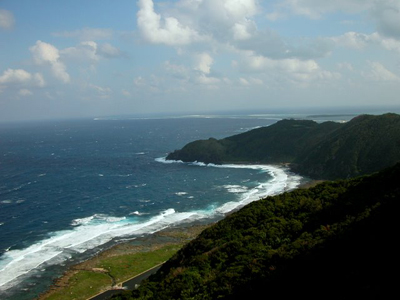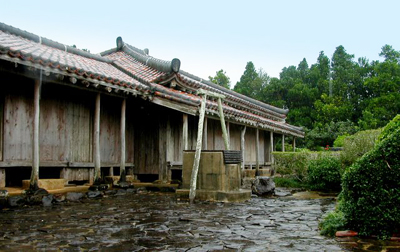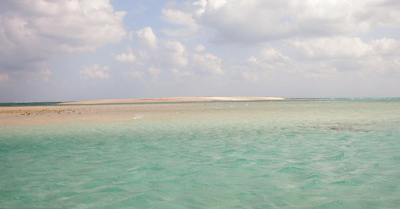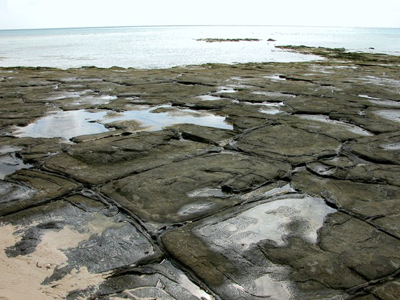Almost 26 years ago to the day, I visited Kume Island on a quest to find the most beautiful island in the world. In response to a Swiss publishing company's competition for the world's most beautiful island, more than 15 countries had nominated their own candidate island. Japan's nominee was Kume Island, part of the Okinawan island chain.
I was dispatched to Kume Island by JNTO, to write an article for the competition espousing the island's charms. In the journal I kept at the time I wrote about "the red clay of the earth, the gnarled and twisted pine trees, the huge graves dotting hillsides everywhere, the turquoise sea." I described an old man working barefoot in his muddy vegetable garden, a peaked straw hat on his head. There was the visit to a sake brewery, where one of the brewers handed me a glass of sake and, only after I'd drank it, gleefully revealed that it was actually "snake sake." Sure enough, right in the bottle he produced was a coiled, preserved snake.
The beautiful Kume Island coastline. I recently returned to Kume Island for the first time since that trip, to write about Okinawa for the upcoming edition of Frommer's Japan. While there are decidedly more buildings and attractions than 26 years ago, I don't think Kume Island has changed all that much. It's still rather remote, with rows of sugar cane accented against red-colored earth, majestic Ryukyu pines, white sandy beaches and azure seas. Even the hotel where I stayed—the unassuming Eef Beach Hotel right on water's edge—is still there, as is the man at the local tourist office who guided me around the island all those years ago (we both regarded each other in shock: not only were we both still alive, but we were still going at the same kind of jobs).
Among the island's highlights is Uezu Residence, built by an important lord back in the 1750s when Okinawa was ruled by the Ryukyu Kingdom and Kume Island served as a port of call for trade between China and Okinawa. I took a speedboat to Hate-no-Hama, a treeless sandy island, to snorkel. I visited Bade Haus Kume-Island, the swankiest addition to the island and the only bathing facility in the world that utilizes 100% deep-ocean water, brought up from a depth of 2,020 feet. Next door was the Sea Turtle Museum, where I gazed upon baby and adult sea turtles and learned that Kume Island is one of their major breeding grounds.
Uezu Residence, constructed in the 1750s.
"Hate-no-Hama" is a treeless sandy island popular for snorkeling.
"Tatami Ishi" is a natural wonder of hardened lava. A few months ago, Kume Island became more accessible with the introduction of the Okinawa Island Pass, valid for certain routes within Okinawa Prefecture on flights operated by Japan Transocean Air (a JAL Group subsidiary). Costing JPY 9,000 per flight (with a minimum of two flights required), it's available only to foreign visitors to Japan and must be purchased before arriving in Japan. (Valid until March 3rd, 2011)You can, therefore, visit both Kume Island and Iriomote more cheaply than ever before (see my blog, "A Day in the Wild in Iriomote" posted on January 14, 2009).
In addition, in January the JAL Group began offering direct flights from Tokyo's Narita Airport to Okinawa's Naha Airport, making international connections a snap. As for that beautiful island contest, Kume Island lost out to the U.S. contestant in the beauty pageant-Kauai. But the fact that Kume Island was singled out as the prettiest in this nation of more than 6,000 islands should be incentive enough for a visit. It's a great place to relax, snorkel, bathe, and connect with rural Japan. But nowhere during my last trip, I might add, did anyone offer me snake sake.























































